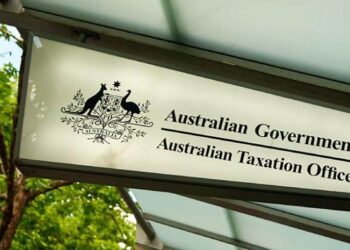The PBR (1052250823319) involved a proprietary limited company that carries on a business in Australia. Family Trust A and Family Trust B each hold ordinary shares in the company.
Due to growth in the business, the owners wish to bring in a third shareholder and director. As part of the restructuring, Family Trust A and Family Trust B will transfer their remaining shares to related SMSFs – SMSF A and SMSF B respectively.
As part of the restructure Family Trust A will dispose of a number of ordinary shares and Family Trust B will dispose of a number of ordinary shares and the shareholdings of the company after the restructure will see each SMSF A, B and C have a designated number of ordinary shares.
The company will have three directors, each related to one of the SMSFs. To facilitate the restructure, a third-party valuation has been obtained and the disposal and acquisition of the shares will reflect this valuation.
All ordinary shareholders are entitled to dividends on the same basis as all other ordinary shareholders. None of the SMSFs will hold a controlling interest in the company following the proposed restructure.
The controllers of each SMSF are not relatives of the controllers of the other SMSFs and are engaging with each other at arm’s length for their respective SMSFs to invest in the company.
The SMSFs and the company are unrelated, and the SMSF members have formed independent decisions to invest in the company due to the growth and long-term investment opportunity.
The parties will enter into a written agreement to record the terms of the transfer of the company’s shares.
There are a number of assumptions made in relation to the restructure including that the ordinary shares in the company will be acquired at a price that satisfies the ordinary meaning of market value and in an income year the return on the ordinary shares in the company represents a commercial and arm’s length rate of return on the shares.
Additionally, there will be no change to the rights attaching to any of the classes of shares in the company and there will be no shares issued in satisfaction of a dividend. The company will not derive income from parties as a result of any scheme the parties were not dealing with each other at arm’s length.
Furthermore, the company will not enter into any non-arm’s length transactions that inflate the income of the company that can be distributed to superannuation funds.
The ATO said if any of the assumptions prove incorrect, this is likely to impact the outcome and the ruling should not be relied upon.
In its ruling, the ATO had to determine whether Part IVA of the Income Tax Assessment Act 1936 was applicable, which contains anti-avoidance rules that can apply in certain circumstances where an individual obtains a tax benefit, imputation benefit or diverted profits tax benefit in connection with an arrangement.
The Commissioner stated that to rule on whether Part IVA applies, it needed to obtain and consider all facts about the arrangement.
On the issue of the value of shares and cost of the shares (Paragraphs 295-550(3)(a) and (b)), the PBR continued that TR 2006/7 states:
- The market value of the shares at the time they are acquired will be compared to the cost of the shares (paragraph 22).
- If a superannuation entity acquires shares in a company for an amount less than the market value of those shares, this will be a significant factor in determining whether the payment of the dividend is consistent with an arm’s length outcome. This will especially be the case where other shareholders in the company paid market value for their shares (paragraph 28);
“The value of the shares was determined by an independent valuation. The shares will be purchased by the funds at their value based on this third-party valuation. All shares in the company will be purchased for the same price,” it stated.
“Therefore, these factors support a conclusion that dividends from the company shares will be consistent with an arm’s length dealing for subsection 295-550(2) of the ITAA 1997.”
Regarding the issue of non-arm’s length dealings the Commissioner stated that considering the matters listed in paragraphs 295-550(3)(a) to (f) of the ITAA 1997, the transactions involving the acquisition of shares by the funds and the basis upon which dividends will be paid by the company are consistent with arm’s length dealings.
“Therefore, the dividends paid by the company on the ordinary shares for the period covered by this ruling will not be non-arm’s length income of the fund under section 295-550(2) of the ITAA 1997,” it said.
“However, if any of the assumptions prove incorrect this is likely to impact the outcome and this ruling should not be relied upon.”
It continued that Subsection 295-550(1) of the ITAA 1997 stated that in GYBW and Commissioner of Taxation [2019] AATA 4262 at 124, the Tribunal observed:
“… that it is difficult to conceive of circumstances where a dividend paid by a private company to a complying superannuation fund would not be non-arm’s length income under s 295-550(2) yet constitute non-arm’s length income for the purposes of s 295-550(1)”.
“Furthermore, section 295-550(2) specifically addresses the situation in which a dividend is paid to a complying superannuation fund by a private company and unlike s 295-550(1) adopts the prima facie position that such income is “non-arm’s length income” unless the amount of the dividend is consistent with an arm’s length dealing, based on the factors set out in s 295-550(3)”.
The ruling continued that it is difficult to conceive of a situation in which a taxpayer is able to demonstrate that the prima facie assumption in s 295-550(2) is rebutted but at the same time fails to demonstrate that the amount of the dividend is not non-arm’s length income for the purposes of s 295-550(1), which involves no prima facie assumption.
“As such, where a dividend does not constitute non-arm’s length income under subsection 295-550(2) of the ITAA 1997 it is accepted it cannot be non-arm’s length income under subsection 295-550(1),” it said.
“For the reasons given above dividends paid by the company for the period covered by this ruling will not be non-arm’s length income of the fund under section 295-550(1) of the ITAA 1997.”



Did anyone ask about a breach of s66?